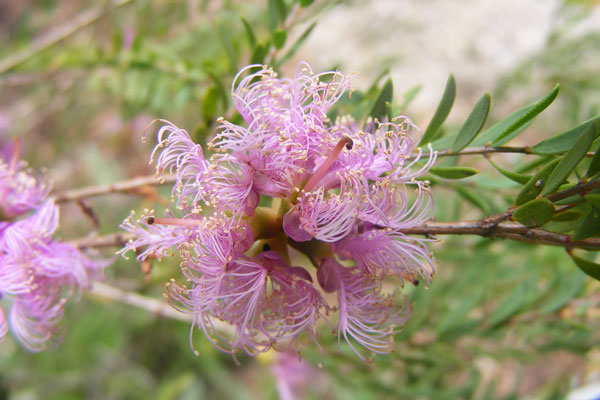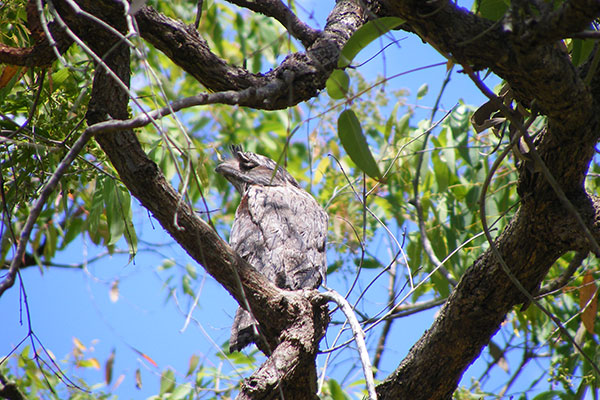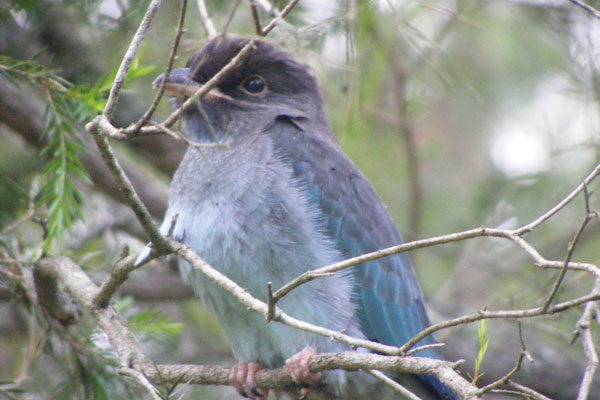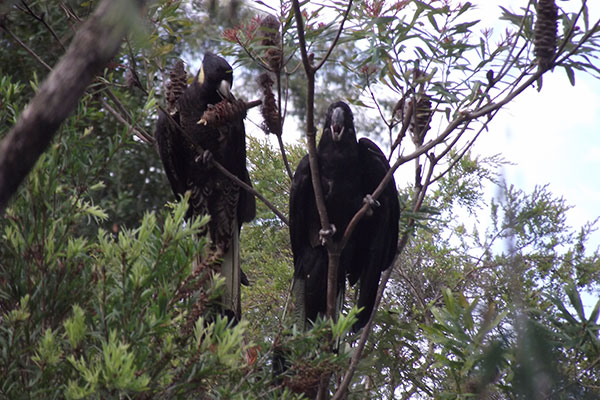In 1981, we purchased our 15 acre property, with nearly three quarters of the property previously cleared for timber. The soil in the southern section of our property was so high in salinity we could have used it for table salt. We decided to set this section aside and restore it in the hope that the salinity levels would drop over time. Thank goodness we did. This area is now a Melaleuca wetland.
When we became a proud member of the Land for Wildlife program in September 2003, we were pleased to find out that the wetland that we set aside those many years ago was now valued as remnant Melaleuca wetland. This area plays an important role in providing exceptional habitat and refuge for the local wildlife including our resident egrets, herons, wood ducks, cormorants and water dragons. Our migratory friends, the Yellow-tailed Black Cockatoos also enjoy a plunge in the water hole after gorging noisily on the Banksia oblongifolia.
We have identified numerous local plant species re-populating the area over the years, like Lomandra, Melaleuca thymifolia, Glochidion, Acacias, Leptospermums and rushes. We have given our property a helping hand by infill planting with endemic plants purchased and propagated from the Society for Growing Australian Plants (SGAP) and Caboolture Region Environmental Education Centre (CREEC) nurseries.
The wildlife that we have identified over the years has given us some magnificent ‘feel good’ moments. During the early years, we had regular visits from Eastern Grey Kangaroos and Swamp Wallabies, which grazed on our grasslands and drank from our dams. Among our friendly visitors are our resident families of Common Brushtail Possums, Common Ringtail Possums, Squirrel Gliders, bandicoots and a roaming Echidna using our property as a nature corridor.
When the Melaleucas and Acacias are flowering the whole place is alive with noise and vibrant colour as the birds take advantage of the abundance of nectar and pollen. We reserved some grassed areas naturally for the wildlife, and maintained other areas through grazing for fire management purposes.
Howard has eliminated lantana from the property through constant vigilance, but we still have ongoing weed control for Billy Goat Weed, Slash Pine wildlings, Ochna and Whisky Grass. The Whisky Grass only appeared about five years ago.
We love finding our silent residents (Tawny Frogmouths) hiding in the Angophoras or Acacias. There are usually three of them together. It is easy to see from our photo why they are called frogmouths.

The beautiful Melaleuca thymifolia in flower. Variegated Fairy-wrens and Red-browed Finches can often be seen in these trees.

One of our Tawny Frogmouths.
Our membership with Caboolture Daytime SGAP and the Wallum Study Group has helped us enormously in learning about the native indigenous plants for this area and helped me buy the correct plants for our revegetation. The Melaleuca thymifolias that we were given as free plants have proved to be very tough plants, surviving after being flooded for about three months. They are my favourite wallum plants and it has a beautiful flower.
Our property consists of wallum wetlands and dry eucalypt forest with some beautiful specimens of Eucalyptus racemosa (Scribbly Gum). I have been able to rescue various native seedlings from here to share with SGAP and CREEC.

I was fortunate enough to get close to this young Dollarbird when she was resting after her first flight

It was exciting to see the Yellow-tailed Black Cockatoos feed on the Banksia oblongifolia trees that I had planted close to the house 12 years ago.
We have three Carpet Pythons living on the property. The largest one seems to stay up the back of the property while the two smaller ones are often seen in the shed and near the house. One was happy to get up close and personal with us. He needed a gentle tickle with the hand broom to encourage him to back out of the fly mesh from our back door. Once he was back on the downpipe, he frightened a Green Tree Snake who was happily sunning himself on the pipe.
We discouraged one carpet snake that was sneaking up on a baby White-browed Scrub-wren when it was fledging. We felt it was okay for us to intervene as the parents had chosen the safety of Howard’s workshop to build their nest.
The Dollarbirds return every October and compete for a magnificent 40-year plus Scribbly Gum nest site with a pair of Galahs and lorikeets.
Last year we noticed a decline in our Brown Quail numbers. We had two families of at least ten, then for six months, we only saw one pair. It was such a relief when we saw eleven of them return last week. We had been concerned they may have been subject to domestic or feral predation.
There are still a few kangaroos around but they are not as bold as they used to be. We will always have to work at keeping our little piece of paradise free from weeds, but the pleasure of enjoying the wildlife is worth it.
Article and photos by Carol and Howard Heyworth Land for Wildlife members Moodlu, Moreton Bay
